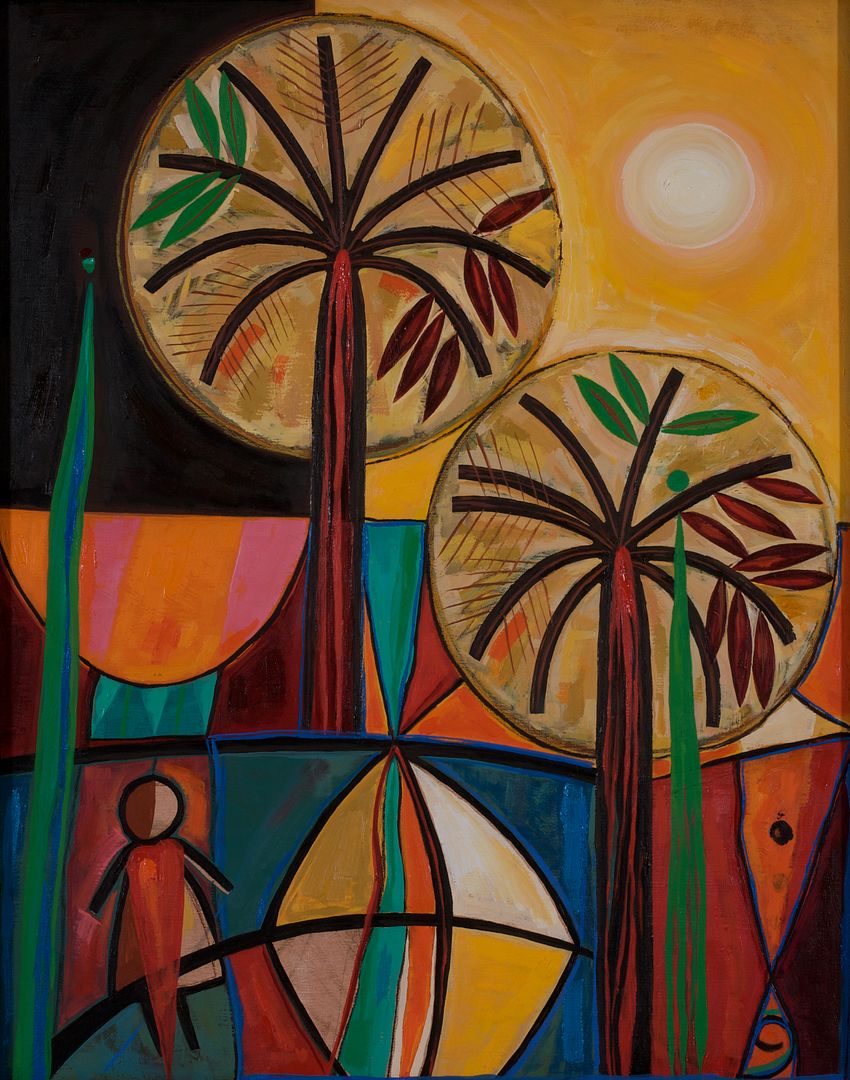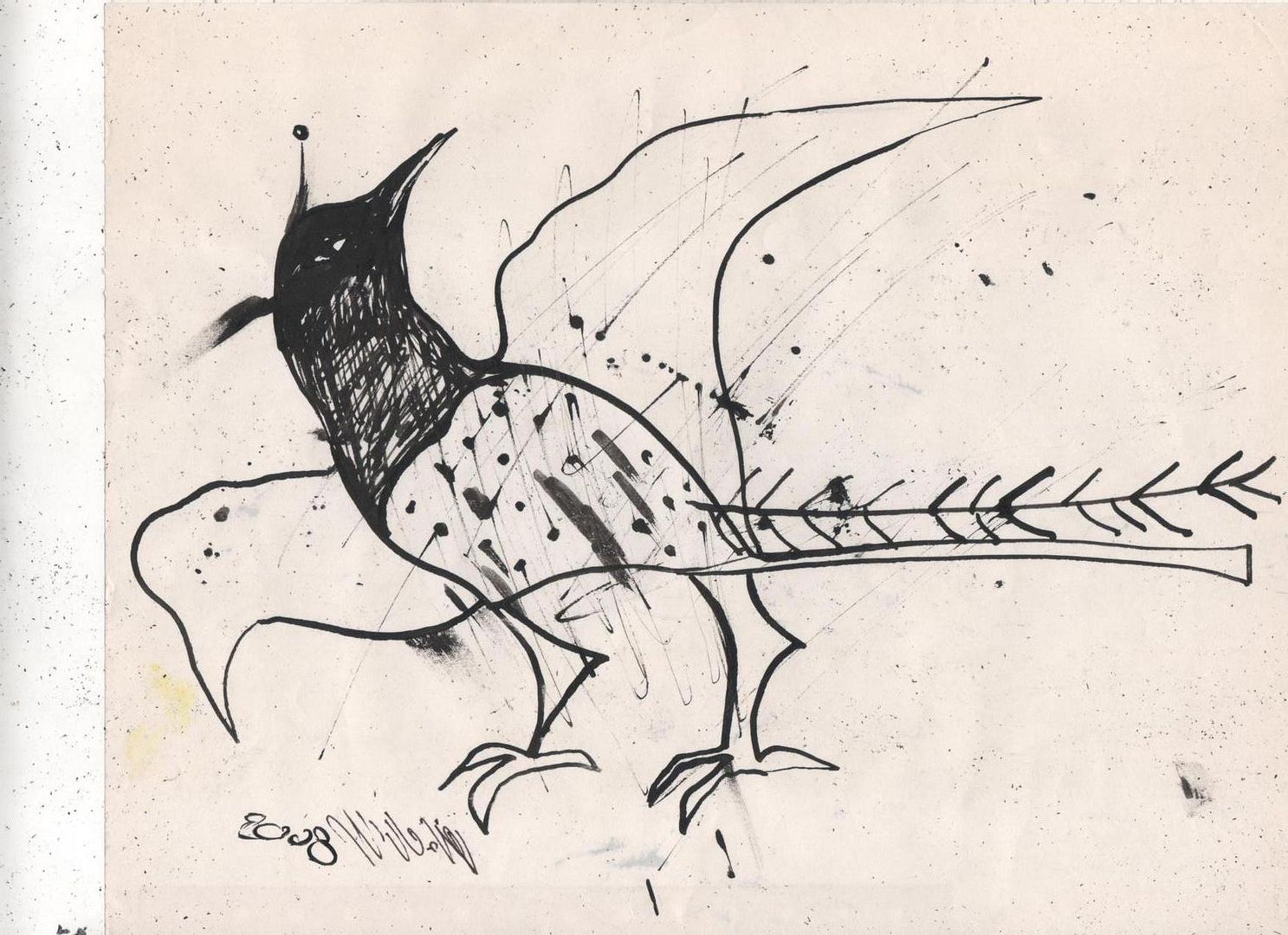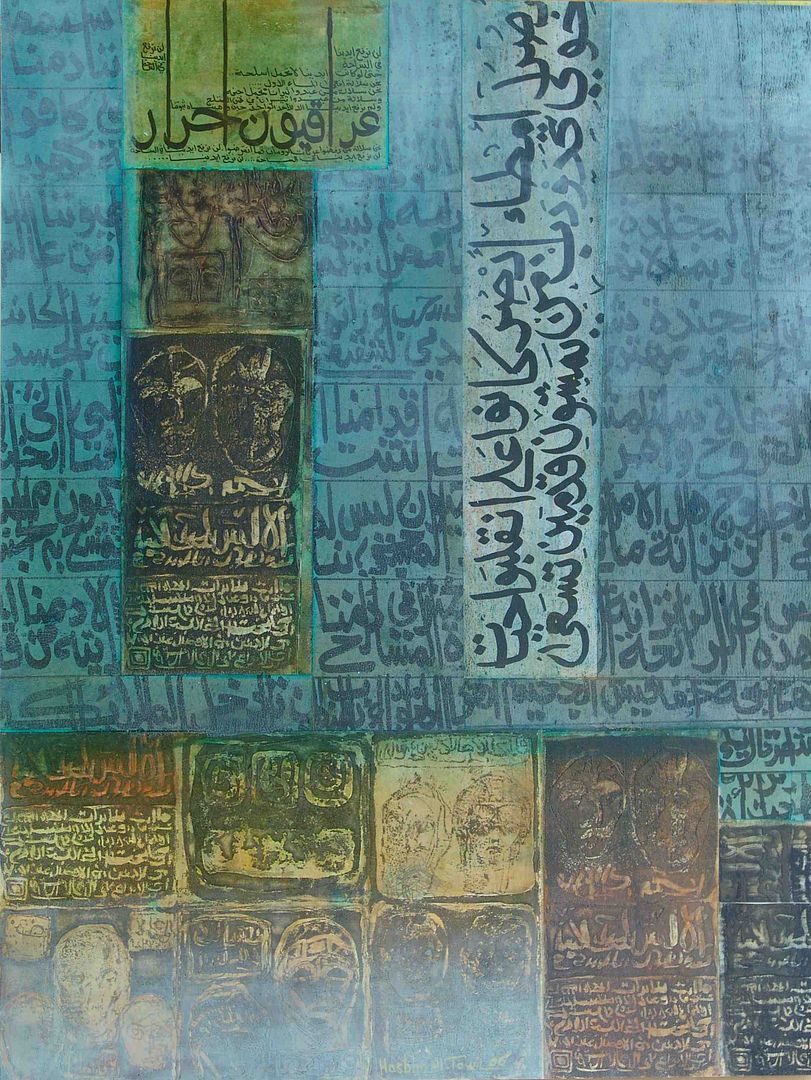![]()
La Tunisie révolutionnaire ne cesse d’aller de surprise en surprise. Du jour même, du moment où elle s’est pensée comme révolutionnaire, elle est entrée dans un processus d’incessante redécouverte d’elle-même et de ses ressources cachées, dans l’enchantement comme dans la crainte et la stupeur. L’échéance électorale du 23 octobre n’a été au fond qu’une étape particulièrement révélatrice ou cruciale dans cette mise au jour progressive d’une société passablement inconnue.
L’analyse dominante, dans les milieux de gauche, fut celle d’une anomalie politique : les résultats du scrutin auraient attesté une forme d’impréparation et d’innocence politique du pays et des acteurs citoyens. Ce constat sévère est-il justifié ?
Le premier bilan qui pourrait être tiré de cette année révolutionnaire est celui-ci : la Tunisie n’est pas celle que nous pensions. La vérité officielle d’une Tunisie progressiste libérale, moderniste, urbaine, de classes moyennes, féministe, laïque, n’est plus une vérité consensuelle et partagée ni même une vérité reçue… C’était pour une large part un simple paravent. Or, loin que le soulèvement né à Sidi Bouzid, Thala ou Kasserine ait donné lieu au bouleversement attendu des priorités économiques et sociales du pays, il a commencé par impulser sur la scène civique, d’une manière imprévisible et déroutante, un véritable débat sur l’identité nationale. Stratégies dilatoires des élites économiques ? Pure démagogie électorale que ce débat ? Quoi qu’il en soit, les opinions fusent de toutes parts, de manière conflictuelle et passablement incompatible autour de cette même question : « qui sommes nous ? ». Les arguments se déchaînent autour de ce que serait ou ne serait pas « la Tunisie authentique ». Et toute cette effervescence renvoie au même constat désabusé d’une atomisation politique, et plus particulièrement d’une atomisation de la gauche « laïque », qui aurait permis la position de force des islamistes aux élections du 23 octobre 2011.
Un semi-échec, par conséquent, que cette anomie politique ? La sanction d’une incapacité à s’unir ? Mais qu’entendre derrière ce besoin d’unité et de quelle vision « authentique » du pays s’est-on mis en quête si subitement ? Un détour par l’histoire permet de clarifier ce paysage politique atomisé. Plus exactement, l’histoire, faisant brusquement retour sur la scène civique tunisienne, qui en avait été privée à l’exception d’une doxa nationale lisse, unitaire et peu ouverte aux questionnements, l’histoire éclaire cette apparence de confusion politique que nous observons.
La Révolution n’est sans doute pas close, mais une révolution au moins, est loin d’être achevée : c’est celle des esprits. Quelles que soient nos positions personnelles, plutôt réformistes ou plus franchement révolutionnaires, et orientées vers une mutation radicale des bases de la société, nous sommes tous confrontés à une forme de révolution intime : il nous faut ajuster notre image du pays à de nouvelles réalités et revenir sur un certain nombre d’illusions, de vérités reçues qui, après nous avoir paru consensuelles, sont aujourd’hui au cœur de débats véhéments et virulents.
De manière paradoxale, ce qui divise les Tunisiens depuis un an dans l’invention d’une société nouvelle, dans cet acte de refondation qu’inaugure la Révolution, ce sont au moins autant des enjeux du passé que des projections pour un avenir commun. La fin de la dictature a ouvert le débat sur quantité de tensions qui avaient été enfouies sous le tapis, réprimées au point que nous en avions pratiquement oublié l’existence ou ne les évoquions qu’à demi-mot. Du moins le corps national avait-il été continûment travaillé dans ce sens d’une mémoire homogène, insécable.
Par voie de conséquence, nous ne pensions pas la Tunisie comme une société mais comme une nation, et la Révolution s’est traduite comme l’irruption brusque de la réalité sociale et d’une pensée par la société. Elle nous a certes réconciliés d’abord avec la nation, dans la réappropriation de tous ses emblèmes, de l’hymne au drapeau, déclinés à l’infini, mais pour mieux ensuite nous confronter à la complexité d’une société, qui s’ignorait elle-même dans ses clivages et ses divisions, ses fractures et ses tensions. Nous étions tous, au fond, pris au piège d’un discours sur la Tunisie une et indivisible qui situait le discours politique, aussi factice et creux qu’il ait été, sur le plan de la nation et non pas de la société réelle. Nous avons été abreuvés de discours sur le citoyen, au mépris d’un regard lucide et franc sur ses inscriptions sociales. Il n’y a pas lieu d’incriminer plus précisément ici les responsables de cet état de fait, mais cette réalité simple doit être prise en compte : de gré ou de force, notre rapport au pays s’effectuait sur une base largement idéologique et fabriquée. La Révolution, qui nous a réconciliés avec le patriotisme et le sentiment national, nous a aussi, après l’euphorie fusionnelle des premiers jours, confrontés à des clivages internes dont nous avions perdu le sens.
Or le point le plus troublant à cet égard est que ces fractures qui se sont fait jour concernent au moins autant le passé que le présent. Le premier bilan que nous pourrions dresser de cette année révolutionnaire est celui d’une rémanence et d’un retour de débats historiques, plus ou moins lointains, que l’on croyait refermés. La part du passé dans les débats publics d’aujourd’hui est saisissante et il n’est que de voir l’émoi qu’a pu susciter récemment, par exemple, l’attaque portée par un Ministre de l’Enseignement public à ‘Ali Douagi et au groupe Taht as-Sûr pour en prendre conscience. Après la fougue révolutionnaire et l’émotion consensuelle qui s’est manifestée en Tunisie et dans l’ensemble du monde arabe autour des célèbres vers sur le destin d’Abû’lQâsim Chabbi, comment aurions-nous pu prévoir qu’un débat sur l’enseignement initié par un représentant de l’Etat, mettrait en cause ces mêmes années politiques qui furent celles de la vie de Chabbi, et ce même courant littéraire auquel il appartenait ? Comment aurions-nous pu imaginer la vivacité des oppositions à ce courant intellectuel si emblématique des années 1930 quand d’autres priorités nous paraissaient si criantes ?
La résurgence de tensions politiques s’avère des plus fortes, ainsi, autour de questions anciennes et que nous pensions, à tort, dépassées, et ce même lorsque nous savions les plaies du passé encore béantes, comme à Bizerte notamment. Les élections du 23 octobre ont été la transcription de ces enjeux mémoriels inscrits dans l’histoire locale et nationale et non pas, comme on a souvent voulu le croire, l’expression électorale malhabile d’un peuple accédant à la citoyenneté, et encore peu au fait des stratégies électorales. En fait, toute une partie des tensions et divisions de la Tunisie postrévolutionnaire, que l’on tend si spontanément à interpréter comme des formes d’échecs et de probables ornières de la Révolution, se révèlent parfaitement logiques et claires, si on les comprend à l’aune d’une histoire contenue qui fait retour, et de contentieux historiques insoupçonnés ou oubliés.
Le premier de ces grands débats historiques ouvrant litige n’est pas le moindre, c’est le débat sur le bourguibisme. Autant, au lendemain de la Révolution, nul ne s’essayait à défendre ouvertement le président Ben Ali en fuite et son entourage, autant la figure de Bourguiba a fait immédiatement un retour positif dans le paysage politique, induisant un mouvement de nostalgie. Ce phénomène avait d’ailleurs précédé la Révolution, et diverses formes de sympathie pour l’héritage ou la personnalité du vieux leader avaient ça et là parcouru la blogosphère, notamment. On peut y voir, dans une certaine mesure, un phénomène structurel de réhabilitation du régime précédent le régime déchu. Ainsi, l’accession au pouvoir de Ben Ali en 1987, avait, si l’on s’en souvient, provoqué une vague de nostalgie un peu diffuse autour de la Tunisie des Beys et induit une certaine réhabilitation historique de cette époque, au moins pour quelques grandes figures beylicales.
Dans les mois que nous vivons de vivre, c’est tout d’abord la stature de Bourguiba qui a été réhabilitée, et sa droiture face à la corruption bénaliste. De plus,on a observé politiquement une forme de mimétique de la refondation nationale, sur le modèle du 20 mars 1956 et de l’accession tunisienne à l’Indépendance, un modèle de légitimité bourguibien fort connu, avec la figure de l’opposant revenu d’exil, avec la reconnaissance électorale également apportée à ceux qui avaient payé le prix de la prison et de la torture. Cette forme de gratification électorale des opposants de longue date a bien été identifiée.
Cependant,sous les formes appuyées de l’hommage, le débat autour du bourguibisme est bien réel. Les mises en cause de cet héritage s’avèrent bien plus profondes que le débat public ne le laisse même apparaître. L’image officielle du pays, jusqu’ici, et celle qui prévaut sur le plan international, est, en effet, celle d’une Tunisie exclusivement bourguibienne, jusque dans sa définition sociologique : une société représentée par des classes moyennes, une petite bourgeoisie bien enracinée, une prospérité sahélienne et côtière, une façade maritime tournée vers le monde extérieur, et des élites lettrées résolument francophones sinon toujours francophiles. Son titre de gloire - faut-il le rappeler ?- est le statut exceptionnellement avancé des femmes qui s’est traduit dans le Code du Statut personnel, et cet acquis figure une sorte d’emblème national tunisien, au même titre que l’hymne ou le drapeau. N’est-il pas question d’en faire une Loi fondamentale ?
Or, c’est toute cette emblématique nationale qui vient à discussion aujourd’hui et que l’on débat sur le fond, et avec de plus en plus d’acharnement, mais sans toujours le dire. Autant la condamnation du bénalisme s’effectue ouvertement, se verbalise, sans toujours se traduire en actes d’ailleurs, autant le débat sur le bourguibisme se révèle mordant, mais peu explicite. Ce qui nous saute à la face, notamment, est l’actualité de la question du yousséfisme, qui ressurgit, par exemple, à travers les biographies de Moncef Marzouki, ou de Hamadi Jebali, tous deux opposants à Ben Ali mais aussi tous deux, fils de yousséfistes, victimes de la répression bourguibienne. Le yousséfisme auquel Rached Ghannouchi a rendu hommage à Kasserine en mai 2011. Cette histoire qui avait profondément meurtri le pays ressurgit donc de manière brusque et inattendue, mais au fond très logique, et elle s’est traduite aussi sur le plan électoral.
De manière plus générale, l’irruption de la dynamique révolutionnaire au cœur des régions dites « de l’intérieur » a brutalement mis en cause la légitimité dans son ensemble d’un modèle établi de la Tunisie vertueuse. Le système de gestion du pays, qui était donc fondé sur la logique bourguibienne d’une « façade » sahélienne, urbaine, progressiste et libérale, d’où venait toute initiative, se voit brusquement démenti, contesté dans ses fondements et même dans sa dynamique. Non seulement ces régions de l’intérieur accèdent pour une fois à la pleine lumière, sortent du statut d’intériorité cachée, un peu honteuse, qui était le leur, mais il apparaît qu’une simple extension du modèle de la Tunisie vertueuse, un partage plus extensif des richesses et des ressources, ne suffira pas à résoudre une mise en cause si radicale. C’est toute la position axiale de la Tunisie de Bourguiba qui vacille, dans tout ce qu’elle incarne socialement, politiquement et économiquement. Or ce décentrement suppose aussi un décentrement historique.
Les orientations récentes d’une grande partie de l’opinion tunisienne et, plus concrètement encore, le programme de nombre de partis politiques, assumant pleinement, et comme un préalable à leur action, une perspective de nationalisme arabe ou de nationalisme islamique donnent à penser qu’avec l’abandon programmé de relations privilégiées avec la France, c’est une page décisive de la Tunisie bourguibienne que l’on entend tourner. Par delà des enjeux très actuels et fondés de juste distance à définir avec le gouvernement français, dans un contexte où les motifs de contentieux s’accumulent, c’est bien l’option bourguibienne de la relation organique et privilégiée avec la France qui est mise en question, comme l’exprime aussi la polémique si rapidement surgie sur la question de la langue française.
Le présent débat civique reconstitue en quelque sorte une bifurcation politique qui nous renvoie au temps des combats pour l’autonomie ou l’indépendance face à l’emprise coloniale, une alternative politique qui, à l’époque, aboutit à la confiscation du pouvoir par Bourguiba, avec ses options modernistes autoritaires. Et si l’on compare beaucoup, actuellement, la Tunisie à la Turquie, pour la référence à l’AKP qu’invoque si spontanément en-Nahdha, la comparaison ne fait pas sens seulement sur le plan des stratégies et de l’idéologie d’un parti. De manière plus large, ce sont des évolutions historiques assez semblables que nous observons, et dont la comparaison est d’autant plus pertinente que Bourguiba avait explicitement pour modèle l’action de Kémal Ataturk. Dans les deux cas, la modernité occidentalisante à pas forcés, impulsée par un père de la nation despotique, se voulut-il éclairé, se voit mise en cause au fil des décennies par un retour à des valeurs proprement islamiques, et par l’invocation d’une inscription religieuse de la société, trop longtemps mise sous le boisseau ou confisquée.
Cette conception despotique de la laïcité transparaît bien, par exemple, dans un film récent qui montre explicitement, par des images d’archives, Bourguiba se posant en interprète de la religion (et salué comme tel par la cinéaste). Et dans les deux cas, turc et tunisien, l’entreprise islamiste d’une réécriture de l’histoire compensant ou annulant l’autoritarisme laïciste se heurte à une résistance, soit d’une bourgeoisie occidentalisée, soit, plus particulièrement, pour le cas turc, d’un ultranationalisme laïc …
Au bout du compte, un retournement complet de perspective est opéré par un grand nombre d’acteurs politiques du présent, à commencer par les militants ou sympathisants islamistes. Alors que plusieurs décennies de crispation autour de l’unité nationale avaient érigé ces derniers courants, plus particulièrement, en menace pour l’intégrité de la nation tunisienne, justifiant leur répression par le régime, et qu’ils avaient recouru eux-mêmes à des actions violentes, entravant par là les solidarités et soutiens que pouvaient leur valoir la torture et les souffrances subies, une réinterprétation de l’histoire est amorcée par eux, qui renverse complètement l’initiative et la source de la violence, et qui n’est pas, il faut l’avouer, totalement dénuée de fondements. Non seulement l’Etat tortionnaire est mis à juste raison en accusation, mais c’est toute l’option moderniste occidentaliste du réformisme qui est aujourd’hui interprétée comme ayant réalisé un coup de force historique, en confisquant toute légitimité et autorité au détriment des courants arabistes, salafistes ou plus simplement religieux.
C’est pourquoi notre regard doit remonter plus loin encore dans le passé, pour revenir aux sources mêmes de cette croisée des chemins, de cette divergence cruciale entre deux grandes options au moins. Ce qui se rejoue, en effet, à l’heure actuelle est une forme de scission assumée entre deux options de modernité, dualité réifiée dont le symptôme est la manière dont les détenteurs actuels du pouvoir décrient l’hybridité. La défiance étrange manifestée dès le lendemain de la Révolution aux binationaux est l’un de ces symptômes, tout comme les attaques récentes dont l’emploi d’une langue mêlant le français et l’arabe a pu faire l’objet : l’enjeu tacite est une forme de régression temporelle vers une pureté nationale préalable à toute francisation ou toute contamination par le monde extérieur.
Les débats sur la question des femmes et sur le statut de la femme sont la meilleure expression, ainsi, d’une critique de la doxa bourguibienne, même si, comme il a été rappelé, elle n’ose pas encore pleinement s’assumer comme telle. Maladresse ou provocation délibérée, la sortie sur les mères célibataires de Souad Abderrahim, élue du parti en-Nahdha, se présentait comme une attaque contre la préfiguration ultime d’un féminisme d’Etat, dans la logique progressiste, décrite comme occidentale, des réformes initiées par Bourguiba. Le terme ultime de cette évolution serait une aide publique apportée à des femmes faisant librement le choix de mettre au monde un enfant hors mariage. Les réactions d’indignation suscitées par cette lecture éminemment biaisée du féminisme ont heureusement rétabli une lecture sociale de cette réalité, rappelé son inscription populaire et les conditions socio-économiques précaires auxquelles elle renvoie, mais force est de constater que cette lecture sociale, classiste, manque le plus souvent, y compris dans le discours des féministes démocrates, dès lors que l’on évoque la question des femmes. Depuis des décennies, voire depuis plus d’un siècle, la question des femmes, par excellence, justifie d’une illusoire lecture transclasse parce qu’elle renvoie systématiquement, non pas à la société, mais à la nation et à ses projections.
En effet, cette question des femmes nous ramène à cette fameuse croisée des chemins du temps de la Nahdha historique, au tournant du XIXe siècle et du XXe siècle, lorsque s’étaient violemment affrontés, sur un plan idéologique, les partisans d’une réforme par un ressourcement interne, islamique, arabe, religieux (et ce dans des modulations variables), et les partisans d’une réforme de la société par l’occidentalisation (selon des modes tout aussi variables). Dans l’une comme dans l’autre de ces grandes options, la question de la femme occupait une place centrale dans la régénération de la société (ainsi que l’on percevait la question) et n’est-ce pas un semblable moment de refondation que nous vivons après des décennies de corruption et d’abaissement ressenti ? Le réformisme « conservateur », la modernité conservatrice, si l’on peut oser cette formule, parfaitement assumée aujourd’hui par certains courants politiques, sanctuarisait alors la femme comme pilier de la structure familiale et d’une fondation morale de la société, rôle parfaitement assumé par les islamistes à l’heure actuelle et non exclusif d’une fonction publique et civique assignée aux femmes ; le réformisme moderniste et occidentalisant insistait plus volontiers sur l’égalité homme-femme et sur l’éradication de pratiques discriminantes à l’égard des femmes ( voile, polygamie…), concevant leur rôle public sur un mode bien moins différentialiste.
Mais tous deux avaient en commun de réserver une place politique structurante à la question des femmes dans leurs projets. On sait que le deuxième courant l’a emporté historiquement, au prix, parfois, de dévoilements forcés, d’une violence sur les corps plus que symbolique et d’une outrance dans la disqualification des conservateurs religieux.
Il y aurait beaucoup à dire et à apprendre encore sur cette histoire du premier XXe siècle, mais même retracée trop schématiquement comme elle l’est ici, elle nous enseigne à ne pas considérer a priori, comme on le fait trop souvent, les mouvances islamistes tunisiennes comme étant systématiquement étrangères au pays et à sa tradition, calquées sur des pratiques d’importation plus ou moins récentes. Dénoncer l’ingérence politique en cours du Qatar ou d’autres Etats islamiques dans les affaires internes tunisiennes est une chose. Cela ne doit pas empêcher d’avoir le courage de reconnaître cette filiation que le vote pour l’Assemblée constituante a quant à lui parfaitement reconnue : les courants islamistes au moins modérés sont les héritiers, à bien des égards, d’un conservatisme religieux, à visée plus ou moins réformiste, qui fut bel et bien tunisien, et qui fut combattu et mis en minorité, voire ostracisé par la Tunisie de Bourguiba. Se positionner en désaccord politique avec ces courants, voire en désaccord radical, n’exclut en rien de leur reconnaître cette filiation et cette inscription nationale, dont les histoires locales, régionales, familiales portent l’empreinte ou le cicatrices, et cela devrait contribuer au contraire à apaiser le débat en le recentrant sur une histoire interne mieux assumée et connue.
C’est pourquoi l’on ne peut souscrire à ces affirmations pourtant très banales que reprennent tant de démocrates « laïcs » (sans discuter ici cette formule inadéquate) : la Tunisie authentique serait laïque et sans tradition islamiste. La démarche même de prétendre enfermer la nation tunisienne dans une seule et même vérité doit nous faire peur, car elle relève d’un réflexe totalitaire et unitaire dont nous prétendons justement sortir. Pour le meilleur comme pour le pire, la Tunisie est désormais plurielle. Et cette affirmation laïciste, que l’on peut à bon droit et sincèrement défendre, ne vaut désormais que comme un discours d’adhésion à la Tunisie bourguibienne, discours légitime mais qui prête aussi à contestation, et qui dans le nouveau paysage politique n’aura pas plus d’autorité intrinsèque que d’autres positionnements. La Révolution est bien passée par là, mettant en minorité les tenants de ce modèle – d’une manière dont on ne peut savoir si elle est définitive.
Cette année postrévolutionnaire a donc vu la résurgence mémorielle, explicite ou tacite, de quantité d’enjeux historiques qui avaient été occultés, contenus au prix d’une répression laissant des traces bien plus profondes et plus présentes que nous ne l’imaginions, renvoyant à diverses étapes de la construction nationale et à autant de tensions et de cicatrices. Notre prise de conscience, aujourd’hui, que le modèle bourguibien n’enferme pas un être national unique, la complexité des composantes nationales qui ont désormais droit de cité dans la sphère publique, expliquent pour une grande part ce paysage politique très atomisé que révélait la campagne électorale foisonnante de l’automne dernier.
Deux urgences politiques apparaissent alors. La première est celle d’une acceptation, non seulement des résultats du scrutin - ce qui est la moindre des choses en logique démocratique - mais de la multiplication des sensibilités politiques et des partis légalisés qui ont conduit à ce résultat. Qu’il y ait lieu maintenant d’opérer des regroupements, d’entrer dans une recomposition du paysage politique, notamment pour la gauche, de constituer des forces de proposition et d’opposition, est une visée indispensable. Mais il n’y a pas de sens à continuer de se lamenter sur une impréparation de la classe politique et sur son incapacité à s’unir – tout en déplorant paradoxalement les alliances avec en-Nahdha. Quoi que l’on pense du résultat final du scrutin et des alliances en cours, cette première étape électorale, dans sa floraison extraordinaire de partis et de courants, était une étape nécessaire et utile, et à percevoir comme telle, parce qu’elle a servi de révélateur à la société tunisienne et de la société tunisienne, et parce quelle nous permet de mieux comprendre ce qu’en sont les attentes et où en sont les enjeux : enjeux verbalisés ou enjeux tacites et articulés par le seul vote… La société tunisienne, faut-il y revenir, nous était au fond en grande partie inconnue. Il lui fallait cette mise au jour électorale comme un préalable à des engagements politiques moins idéels et plus tangibles.
Or, c’est sur ce point qu’il est urgent, en second lieu, de se dégager d’une perspective trop exclusive de la nation pour entrer enfin dans une lecture lucide de la société. Après avoir évoqué les femmes, toujours saisies comme des hypostases de la nation, ou comme ses emblèmes de modernité, soyons lucides sur les effets pervers de débats sur l’identité nationale qui continuent d’évacuer toute perspective sociale de la sphère publique. Nous sortons de décennies de dépolitisation du discours public, où le mot « peuple » n’était plus jamais entendu dans son sens social, où la référence au « citoyen » gommait tous les clivages sociaux, où les luttes sociales étaient muselées et où l’opposition elle-même se résignait de plus en plus à une mobilisation restreinte aux droits de l’Homme et aux libertés, étouffant des revendications plus explicitement sociales et politiques. Souhaitons-nous en rester à ces débats sur l’essence de la nation qui, certes, ne sont pas creux, puisqu’ils mettent au jour des tensions irrésolues et un lourd passif de mémoire, mais qui à eux seuls n’apporteront aucune réponse à des questions sociales et économiques dont l’urgence est criante ? C’est une société qui a fait sa révolution, et avec une implication différentielle qui justifie une lecture sociale de ses attentes et de ses espérances.
Ayant pris la mesure de nos divergences et de nos divers héritages, de nos filiations diversement assumées, dans leurs contradictions, voire leurs incompatibilités, il est urgent de sortir des seuls débats de principe sur l’identité collective, qu’on la veuille musulmane ou laïque, monolithique ou hybride, et des invocations unilatérales de la nation, pour assumer des positionnements politiques, qui osent dire leur nom, à gauche comme à droite, et qui ne se cachent pas non plus derrière l’histoire. Passée cette première année de la Révolution, l’heure n’est plus à « qui sommes-nous ?» mais à « que faire ? ».
[Cet article a été publié en décembre 2011 sur Nachaz.]
























